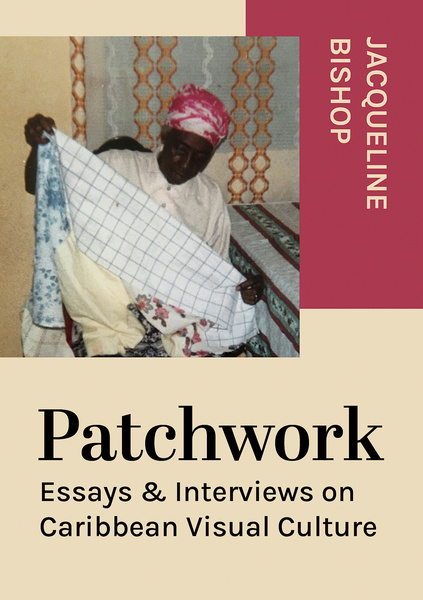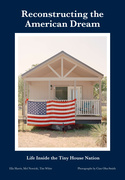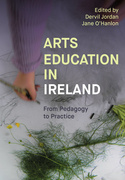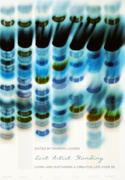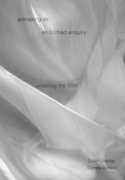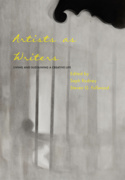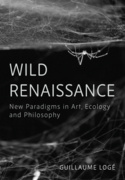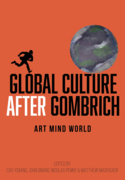Patchwork (Book)
Essays & Interviews on Caribbean Visual Culture
Essays about and interviews with contemporary caribbean writers, scholars and curators. Includes work by trained visual artists and vernacular artists with emphasis on the works of vernacular decorative and ornamental needle workers. Speaks to both indigenous traditions of the region and more globalised contemporary expressions. 27 col, 2b/w illus.
Edition
The patchwork is an apt metaphor for the region not only because of its colourfulness and the making of something whole out of fragments but as an attempt to make coherence out of disorder. The seeking of coherence was the exact process of putting together this book and foregrounds the process of Caribbean societies forging identity and identities out of plural and at times conflicting and contested groups that came to call the region home.
Within the metaphor of the patchwork however is the question, where are the vernacular needlework artists within the visual art tradition of the Caribbean? The introduction sets out to both clarify and rectify this situation, and several common themes flow through the following essays and interviews. Themes include that that the land and colonization remain baseline issues for several Caribbean artists who stage and restage the history of conquest and empire in varying ways. That artists in the region amalgamate as part of their practice and seem to prefer an open-endedness to art making as opposed to expressing fidelity to a particular medium. That artists and scholars alike are dismantling long-held perceptions of what Caribbean art is thought to be, and are challenging boundaries in Caribbean art.
These are among the issues addressed in the book as it looks at ecological concerns and questions of sustainability, how the practices of the artists and their art defy the easy categorization of the region, and the placement of women in the visual art ecology of the Caribbean. The latter is one of the most contested areas of the book. Readers should come away with the sense that questions of race, colour, and class loom large within questions of gender in the Jamaican art scene and that the book, dedicated to Sane Mae Dunkley, aims to insert vernacular needleworkers into the visual art scene in both Jamaica and the larger Caribbean.
Audience will include researchers and scholars of Caribbean and African diasporic art, college students, those interested in post-colonial studies, Caribbean artists, art professionals interested in a wider, globalized view of contemporary art; students curious to know about the many phases of art production throughout the Caribbean. General readers interested in the culture of the region.
Jacqueline Bishop is a writer, visual artist and scholar born in Jamaica who now lives in the United States, where she is a professor in the school of Liberal Studies at New York University.
Acknowledgments
Introduction
The Importance of Place
1. Wendy Nanan Talks about the Importance of Place in Her Works
2. Annalee Davis Uses Art to Unearth and Interrogate
3. For Deborah Anzinger, Ecology Is of Utmost Importance
4. Puerto Rico’s Lionel Cruet’s Artworks Are Focused on the Intimate Relationship with the Environment
5. The In-between Places of Jodie Lyn-Kee-Chow’s Visual Art Practice
6. Robin Farquharson, Unplugged
The Process of Art-Making
7. Garfield Morgan Discusses an Intuitive Approach to Art-Making
8. Jasmine Thomas-Girvan Utilizes the Subject of Loss to Right the Wrongs of the Past and the Present
9. Alicia Brown Revisits and Revises Colonial Narratives within the Languages of Portraiture and Painting
10. Living Gratefully: An Interview with Earl McKenzie
11. Katrina Coombs Discusses Her Fetish for Creating Fine-Art Fiber Works
12. Olivia McGilchrist Explores Caribbean Futures in Virtual Reality Narratives
Women and Visual Culture
13. Using Objects to Convey Meaning and Break Silences: An Interview with Material Culture Expert Steeve Buckridge
14. Master Jamaican Mat-Maker Sane Mae Dunkley Wove Together the Story of the Jamaican People
15. Women and Art: An Interview with O’Neil Lawrence
16. Jamaica’s Rich Bio-Diversity Is Painter Amy Laskin’s Muse
17. Oneika Russell Engages the Tropical Body and Caribbean Identity
18. For Amanda Coulson, Women Artists in Particular Should Remain Vigilant
Challenging Boundaries
19. Jaime Lee Loy Walks the Fine Line between the Familiar and the Unfamiliar
20. Sheena Rose Seeks to Challenge People (and Boundaries) with Her Work
21. Exploring the Art of Female Sexual Desires
22. Llanor Alleyne’s Female Figures Grounded in Nature as an Assertion and Reclamation of Inner Selves
23. La Vaughn Belle’s Contemporary Art Practice of Speaking in Layers
24. Artist Kereina Chang Fatt Uses Her Work to Address Relationships, Community, and Connectedness
Defying Easy Categorization
25. Krista Thompson Brings a Critical Eye to What Is Confined to the Footnotes of Art History
26. For Art Historian Edward J. Sullivan, the Caribbean (and Caribbean Artists, like Puerto Rico’s Francisco Oller) Defy Easy Categorization
27. Queen Victoria Give We Free: Tackling Victorian Jamaica in the Visual Arts
28. Pre-Raphaelite Sisters Exhibition Features Jamaican: An Interview with Jan Marsh
29. Art Historian and Curator Allison Thompson Believes That Art Is a Forum to Envision What Is
Possible
30. Where Others See Fragmentation, Tatiana Flores Sees Continuity in Caribbean Art
Appendix
About the Author


